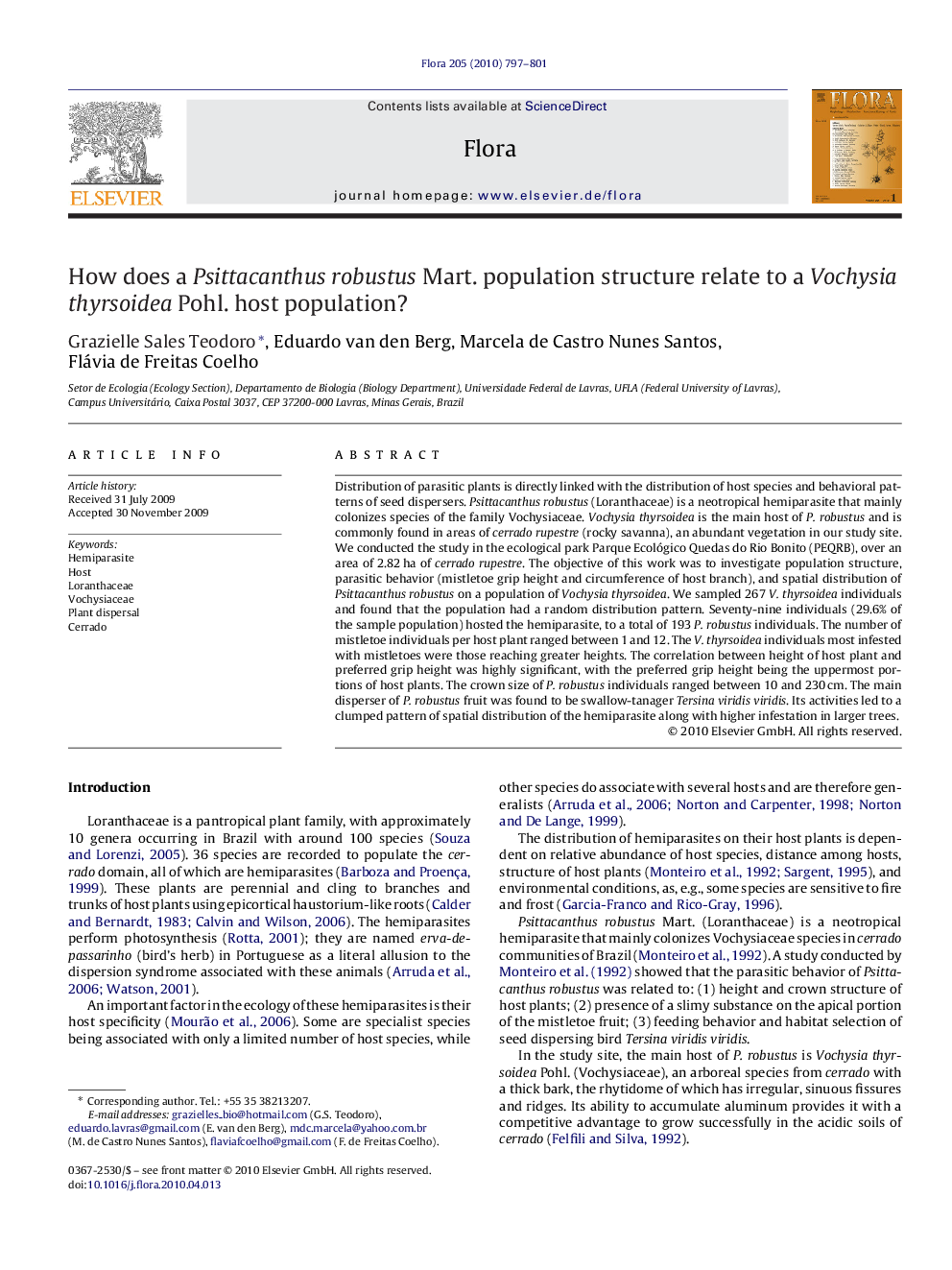| کد مقاله | کد نشریه | سال انتشار | مقاله انگلیسی | نسخه تمام متن |
|---|---|---|---|---|
| 2179853 | 1095088 | 2010 | 5 صفحه PDF | دانلود رایگان |

Distribution of parasitic plants is directly linked with the distribution of host species and behavioral patterns of seed dispersers. Psittacanthus robustus (Loranthaceae) is a neotropical hemiparasite that mainly colonizes species of the family Vochysiaceae. Vochysia thyrsoidea is the main host of P. robustus and is commonly found in areas of cerrado rupestre (rocky savanna), an abundant vegetation in our study site. We conducted the study in the ecological park Parque Ecológico Quedas do Rio Bonito (PEQRB), over an area of 2.82 ha of cerrado rupestre. The objective of this work was to investigate population structure, parasitic behavior (mistletoe grip height and circumference of host branch), and spatial distribution of Psittacanthus robustus on a population of Vochysia thyrsoidea. We sampled 267 V. thyrsoidea individuals and found that the population had a random distribution pattern. Seventy-nine individuals (29.6% of the sample population) hosted the hemiparasite, to a total of 193 P. robustus individuals. The number of mistletoe individuals per host plant ranged between 1 and 12. The V. thyrsoidea individuals most infested with mistletoes were those reaching greater heights. The correlation between height of host plant and preferred grip height was highly significant, with the preferred grip height being the uppermost portions of host plants. The crown size of P. robustus individuals ranged between 10 and 230 cm. The main disperser of P. robustus fruit was found to be swallow-tanager Tersina viridis viridis. Its activities led to a clumped pattern of spatial distribution of the hemiparasite along with higher infestation in larger trees.
Journal: Flora - Morphology, Distribution, Functional Ecology of Plants - Volume 205, Issue 12, December 2010, Pages 797–801